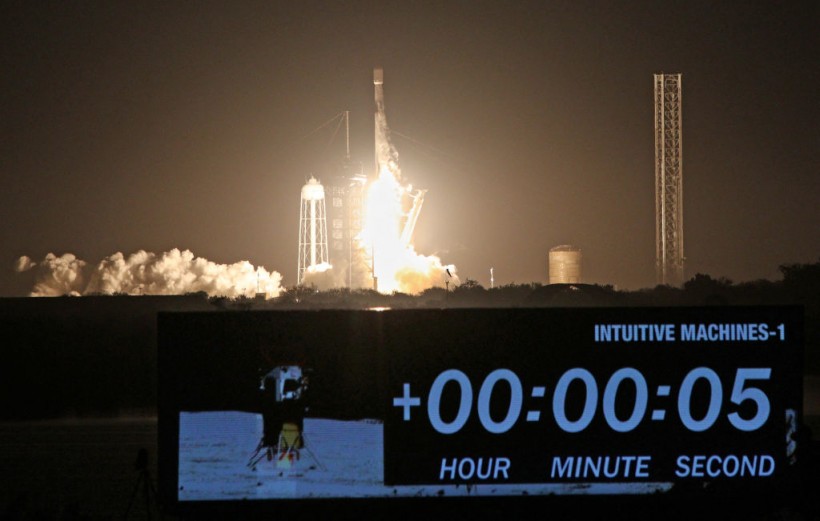Intuitive Machines and SpaceX successfully launched its NOVA-C lunar lander named Odysseus early Thursday (Feb. 15) in an American attempt to safely land on the surface of the Moon more than 50 years since the end of the Apollo program.
The spacecraft lifted off from Launch Complex 39A at the Kennedy Space Center in Cape Canaveral, Florida at 01:05 Eastern Time (06:05 UTC) on top of SpaceX's Falcon 9 rocket.
The launch was initially scheduled for Wednesday (Feb. 14) but was scrubbed due to temperature issues in the spacecraft's liquid methane fuel.
Odysseus is part of NASA's Commercial Lunar Payload Services (CLPS), a program that would assist its flagship Artemis missions, one of which would attempt to land Americans on the Moon for the first time since Apollo 17.
Read Also: NASA Launches $948 Million PACE Satellite to Study Earth's Oceans, Atmosphere

Houston's Moonshot a Second Time Around
An earlier attempt by Astrobotic was made in January with its Peregrine lander. However, after it launched aboard ULA's Vulcan rocket, the company reported that it had a fuel leak, effectively failing the whole mission which resulted in a fiery return soon afterward.
Landing on the moon is extremely challenging, NASA Deputy Associate Administrator for Exploration Joel Kearns told reporters prior to the launch. "You've probably seen that, over the past year, the success of every landing was never assured."
Intuitive Machines CEO Steve Altemus also expressed confidence that his firm's attempt to land on the moon would be successful.
"We learned from others ... but in addition, we bring things together quickly," he said. "We bring hardware and software together in the early stages of development and testing, and we test often."
Related Article: Valentine's Day Scrub: Intuitive Machines Moon Lander Launch Postponed to Feb. 15









